Life and Work on the Tower RNLI Lifeboat Pier
Posted in 2010-2019, 21st Century, contemporary, people, Strandlines, Strands, workers and tagged with 999, emergency, life saving, lifeboat, Marchioness, river, river thames, RNLI, Tower lifeboat Pier
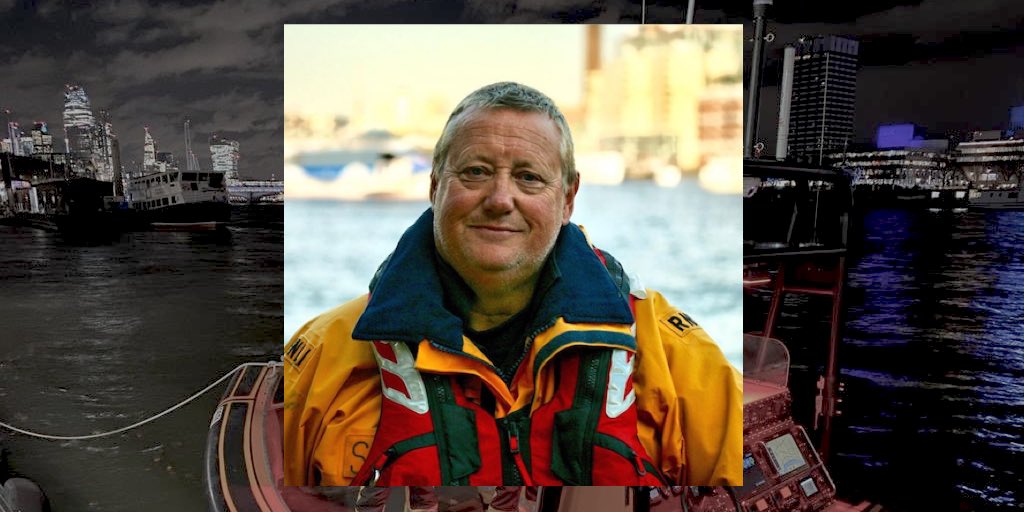
Anyone who has crossed the Waterloo bridge might have noticed the Royal National Lifeboat Institution Pier, on the north side of the Thames. This is the busiest lifeboat station in the United-Kingdom.
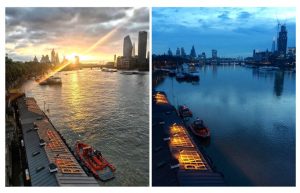
Left: Tower RNLI Lifeboat Pier (11/09/18). Right (02/02/2020). Both via @towerrnli on Instagram.
I spoke to Stan Todd, a full-time helmsman on the station, and looked over archive materials, to find out more about how the lifeboat pier functions around the clock, every day of the year. Thank you to Stan for sharing the story of his experience of working for the RNLI since 1980!
The Thames lifeboat service was opened following a fatal incident on the river: on 20th August 1989, the pleasure cruiser The Marchioness entered in collision with the 1800 tons dredger The Bowbell near Cannon Street railway bridge. The Marchioness sank rapidly with its 131 passengers, catering staff and crew, causing the loss of fifty lives.
Following this, an action group, bringing together victims’ relatives, pressed authorities to improve safety on the river. In a 2019 interview, Margaret Lockwood Croft explained: “I spent eleven years campaigning, eleven years to get new rules and regulation on the River Thames […] to get the lifeboats on the River Thames because they had none”.
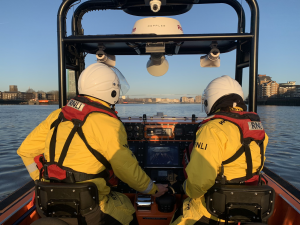
Call No.1 of the day (25/12/2019) @TowerRNLI on Twitter
On 22nd January 2001, the RNLI charity announced the opening of its first river specific search and rescue service with four stations on the capital’s river. Stan Todd explains the Lifeboat Station eventually opened on 2nd January 2002 “at Tower Pier next to the Tower of London”. However, the location was impractical “freezing in winter and roasting in summer”.
For this reason, in 2006, the Lifeboat Station moved to its present location. Formerly occupied by the Metropolitan Police, the Waterloo pier was sold for a symbolic pound, that the Met immediately donated back to the RNLI. The new station retained the name of its original location: Tower.
In order to be able to offer an immediate response at any time of day or night, the station’s crew consists of ten permanent workers and fifty-five volunteers from various backgrounds, including paramedics, doctors and firefighters but also barristers, city workers, consultants, postgraduate students and university lecturers.
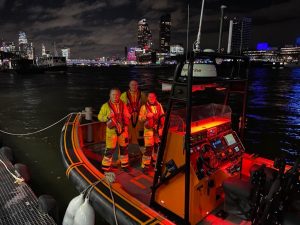
Arrival of a new E-Class Lifeboat E-10 to Tower (6/12/ 2019) @TowerRNLI on Twitter
Rescue missions are called “shouts”. “When the emergency bell goes there is still the adrenalin rush the pager used to give me 30 years ago” Stan Todd told the BBC in 2014. Once the bell has rung, the four or three-person crew must get into their lifejacket, launch the boat “and leave in 90 seconds”. “You never know what you will get”: a sinking boat, someone fallen into the water going after a dog, a dropped item or attempting to help another person, someone that is threatening to jump from a bridge, someone in need for first aid on a passenger or work vessels or alongside the river. The objective is always to provide assistance as quickly as possible.
Because when someone is drowning every second counts, the Tower RNLI Lifeboat station is equipped with rapid E-10 boats. These recognisable orange lifeboats “are unique to the institution and can only be found on the river Thames” explains the helmsman. This kind of vessel is designed to be very rapid, reaching a speed of 50MP, while also being specially adapted to medical work.
Stand Todd explains that on the one hand when a mission is not successful it is a terrible hardship. But on the other hand that there is nothing more rewarding than to “make a difference to somebody, reaching them at their last breath, giving them another chance to live”.
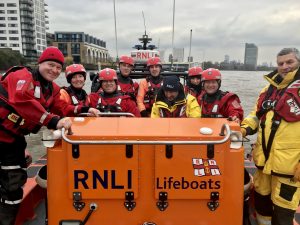
Training with the fire brigade (16/11/2019) @TowerRNLI on Twitter
Working for the RNLI has taught him “to respect the water”. He insists on the dangers of the river’s tidal currents as well as the submerged debris, dense industrial and commercial vessel traffic it carries. “The river is changing all the time, the water can take you anytime it wants”, “no Olympic swimmer could outswim its tide”. Entrapment areas such as the barriers of the London Eye and other pontoons and gaps are particularly dangerous because they are difficult for rescue teams to access.
When it is not answering emergency calls, the crew fulfils patrol mission for marine safety and accident prevention, especially during large events such as boat races or festivities like New Year. They train with the police, coast guards, ambulances and fire services, with whom they very often work hand in hand.
Work on the pier also includes maintenance of the boats and station and raising awareness about the charity by leading visits and responding to people’s questions on social media. Indeed since a 2012 YouGov poll that indicated that only 16 per cent of Londoners were aware that the RNLI operated on the river, the Tower Lifeboat station has been working to gain more visibility.
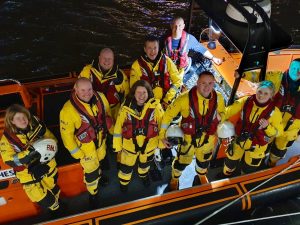
#999Family 05/04/2020 @TowerRNLI on Twitter
However, the station is not only a working space. For full-time workers like Stan Todd “shifts are twelve hours long, we work four days on four days off so most of us stay four days on the pier”. To do so, “the pier is split into two, an operational end and an off duty end, one is full of rustle and bustle while the other is kept calm and has low lighting”. The helmsman admits the floating pier is sometimes a difficult place to sleep on because “passing vessels make the station bang and crash around”. “After four days and fours nights, when you go ashore you still feel as if the ground was moving”.
Reflecting on life and work as part of the Tower RNLI crew, he insists on the camaraderie and friendship among the “RNLI family”. He feels privileged to be able to enjoy the station’s prime position and skyline view. “You’re right in the centre of London, you’re making a difference to Londoners, it’s the best place in the world” similarly explained Craig Burn to BBC London in 2019.
Since 2002, thanks to its workers, volunteers and donors the Tower RNLI Lifeboat station, ambulance of the river has made the riverside safer and has significantly reduced fatalities on the Thames.
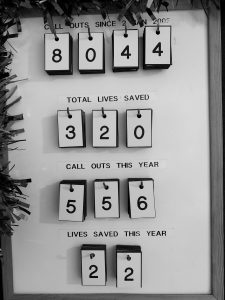
Total call outs and lives saved since opening (01/01/2020) @TowerRNLI on Twitter

[…] stories on spaces and people of the Strand: on the fate of the brutalist 180 Strand; life on the Tower RNLI lifeboat pier; the surprising history of Aldwych underground; and what an unassuming watergate can tell us about […]